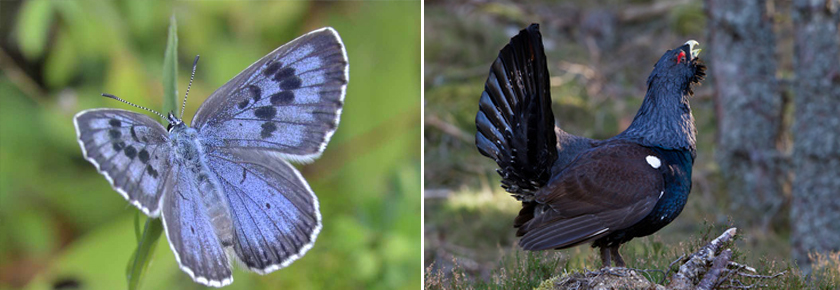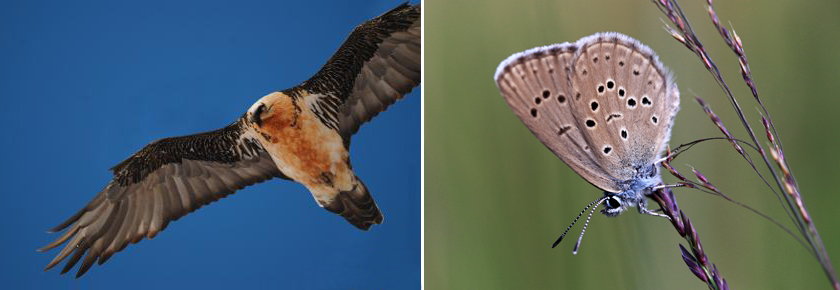
National action plans are non-prejudicial guidance documents designed to define the necessary conservation and restoration measures of the most threatened species in order to ensure their good state of conservation. They meet the requirements of European directives called "Birds" (79/409/EEC of April 2, 1979) and "Habitat, Fauna, Flora" (92/43/EC of May 21, 1992) undertaking the maintenance and/or restoration of species of community interest at a good state of conservation.
This tool for biodiversity protection, implemented since fifteen year and strengthened following the Grenelle de l'Environnement, is based on three pillars: knowledge, conservation and awareness. Thus, their purposes are to organise a consistent monitoring of the relevant species populations, to implement coordinated actions towards the restoration of these species or their habitat, to inform the relevant stakeholders and the public and to facilitate the integration of the protection of species in human activities and public policies.
Each plan consists in three parts. The first one summarises what has been achieved on this subject (biological and ecological constraints specific to this species, reasons for the decline and measures already taken), whilst the second part describes the needs and challenges faced by the conservation of the species and sets the definition of a long-term strategy. The third part specifies the objectives to be achieved, the conservation actions to be taken and the organisational modalities for the implementation of the plan. A national action plan is usually implemented for a 5 years period.

Maculinea arion (Linnaeus, 1758) © J.Touroult & Tetrao urogallus Linnaeus, 1758 © Libre de droits
The first national action plans (formerly called restoration plans) were launched in 1996. Following the Grenelle de l'Environnement, thanks to the strong commitment of the Directorate for Water and Biodiversity (DEB) and the regional offices of the Environment, the development and housing (DREAL), 72 NAP (meaning over 200 species involved) are being carried out today (currently being written, validated, implemented or assessed).
It appears difficult to increase indefinitely this number even even if many other species are still threatened and the objectives of Nagoya addressing the protection of species remain strong. Without questioning the performance of the NAP tool and in order to better address the challenges of conservation of all species, the museum is currently working on the development of a methodology for the prioritisation of species (cf . tab methodology) and a reorganisation of this tool.

Gypaetus barbatus (Linnaeus, 1758) © F.Breton & Maculinea alcon (Denis & Schiffermüller, 1775) © P.Peyrache
Many actors are involved in the development and implementation of the NAPs.
The Muséum national d'Histoire naturelle provides a list of species requiring a NAP (cf. methodology tab) so that the Directorate for Water and Biodiversity (DEB) may initiate the plans and appoint, on a voluntary basis, a Regional Directorate for Environment, Development and Housing (DREAL) as coordinator for each plan.
This DREAL appoints the operator and the writer of the plan in consultation with the Ministry. As a first step, il gathers and chairs the monitoring committee in charge of drafting the plan. After taking into account of comments provided at an interministerial consultation and a public consultation, the NAP is submitted and approved by the National Council for the Protection of Nature (CNPN). Once validated, the plan is distributed nationally by the Ministry and can be implemented.
Thus, in a second phase, the coordinator gathers the DREAL and chairs the steering committee for the implementation of the plan. This committee is led by an operator (or leader of the plan) and provides strategic and budgetary guidelines and monitors and evaluates the implementation and funding of the plan. It also sets the priority of the actions to be implemented.
The implementation of all the actions can only be achieved with the support and participation of a multitude of actors involved in the project: other DREALs, local authorities and inter-municipal cooperation, public institutions and other scientific and technological partners (MNHN, ONCFS, CBN, ONEMA, CPIE...), managers of natural areas, protection of nature associations and volunteer network, as well as socioprofessional actors.